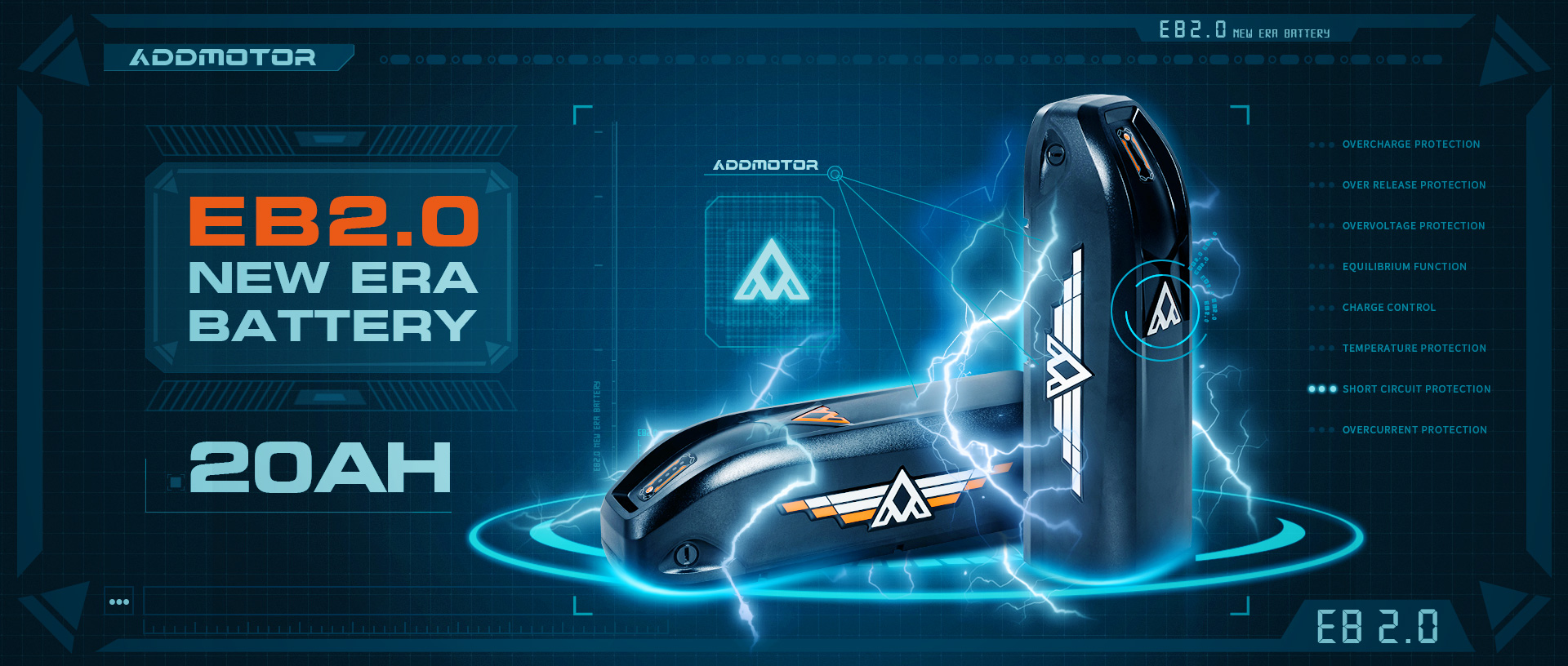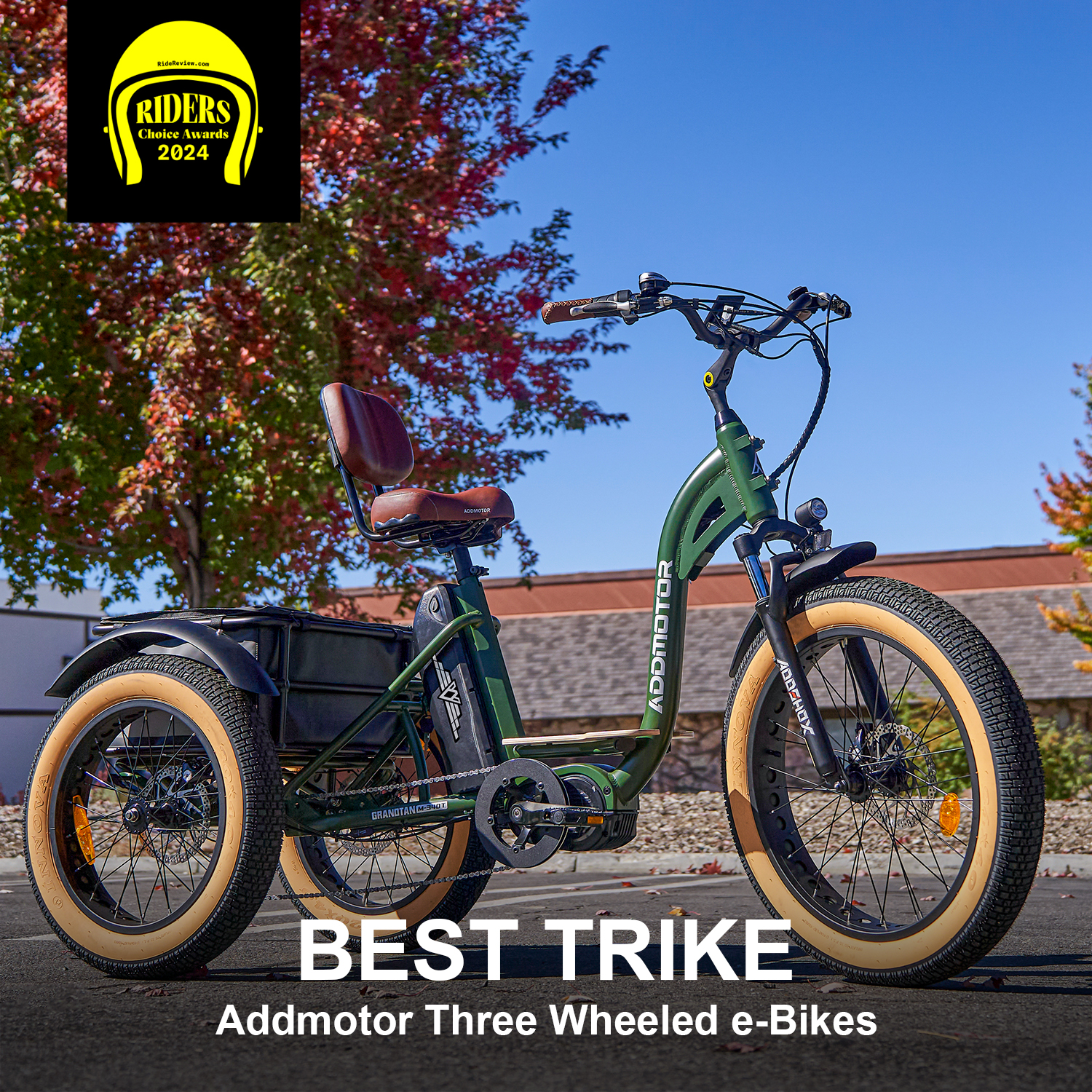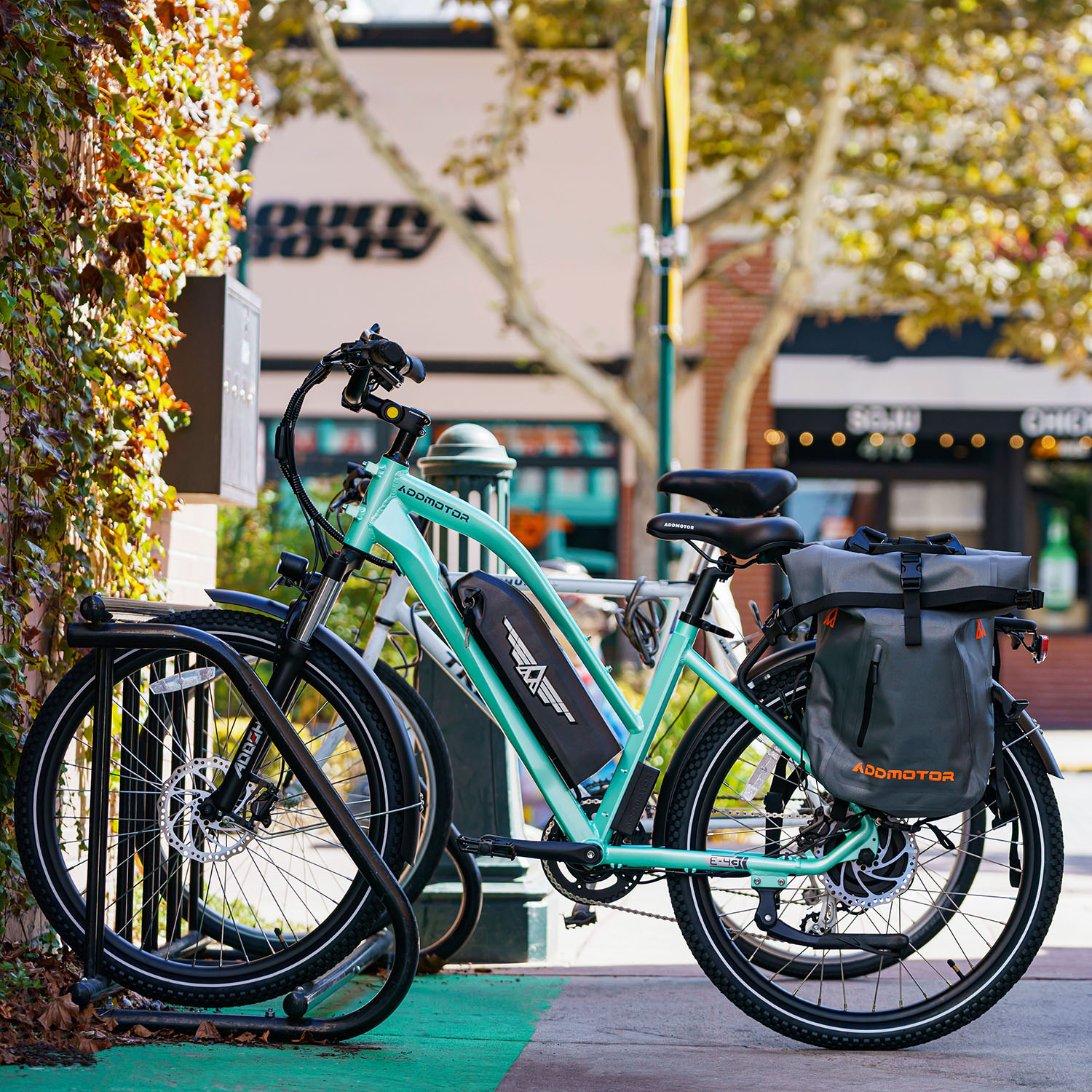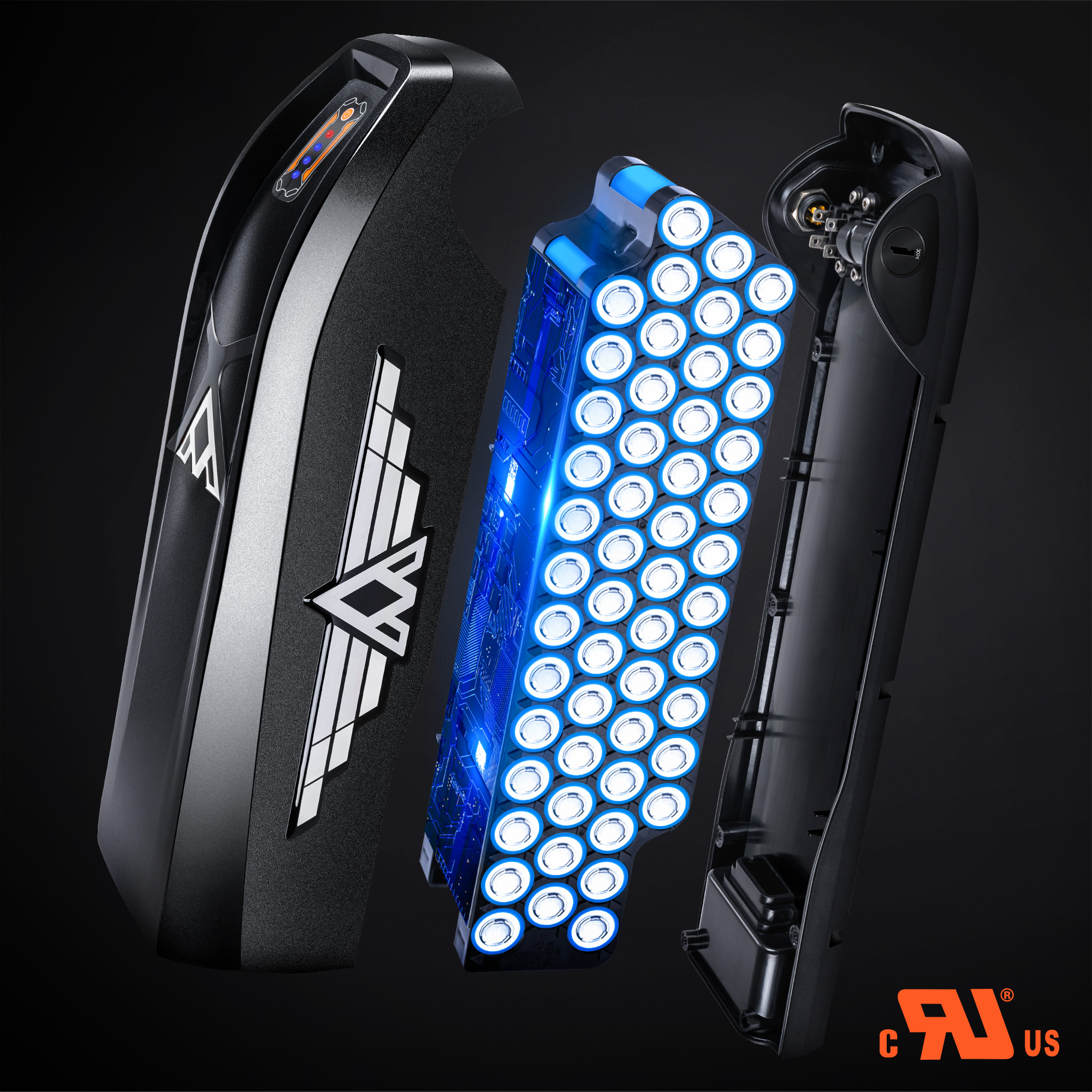Electric Trike Battery Guide: What to Know and How to Choose
By Addmotor | 27 December 2023 | 0 Comments

The battery pack is the heart of any electric vehicle. It provides the necessary amount of energy to drive the motor and provides the right amount of assistance you need.
However, a battery pack, especially a Lithium-Ion battery, can be very difficult to maintain in the long run. You need to charge them properly and keep them safe to maintain their performance for another 3-4 years.
In this guide, we’ll talk all there is to know about e trike batteries. Also, we’ll talk about some extra tips on how to choose the right batteries and how to take good care of them.
How Batteries Work
Electric bikes use powerful motors to drive the wheels and propel the bike forward. These motors require a considerable amount of electrical energy. So to cater to these needs, the motor needs an equally powerful energy source.This is where electric trike batteries come into play. They provide electrical power while retaining the mobility that an eBike requires.
They store electrical energy as chemical energy. After which, they’re re-converted based on power demand.
Batteries eliminate the need to use a power generator. On top of that, they can be packed into a small space and retain their potential for days or even months at a time.
Parts of an eBike Battery Pack
An eBike battery pack consists of several components. This includes:- Battery cells
- BMS (Battery Management System)
- Controller
- Housing
Battery Cells
Although an eBike battery looks like a complete battery with terminals, it’s composed of smaller battery cells. These are typically 18650 Li-Ion cells connected in parallel or series to form larger cells or packs.Each 18650 cell stores an electrical charge and consists of all the components of regular AA or AAA batteries. This includes the anode, cathode, and electrolyte.
Battery Management System
A BMS includes a circuit that takes in the voltage and current readings from all the clusters created by connecting the 18650 cells in series and/or parallel.The BMS monitors the readings of each set and ensures that the overall output is as efficient as possible. This is especially useful because if the voltage is down in individual cells or packs, it can dramatically impact the overall battery capacity.
Controller
The eBike controller is another crucial component. Mainly it acts as the central hub for all the electrical components in the eBike. This includes the motor, eBike controls, display, sensors, and wiring harness.The controller takes in the readings from the sensors, and throttle and sends an appropriate signal to the motor and batteries. In turn, the batteries provide the exact amount of power to drive the motor according to the rider’s needs.
Housing
The housing acts as an enclosure for the battery pack. It insulates and protects the internal cells and BMS against dust, impacts, extreme temperatures, and water damage.In addition, the housing makes it easier for the rider to remove and recharge the battery.
Types of eBike Battery Packs
Electric trike batteries mainly differ by the materials used to develop them. Depending on this, weight, cost, maximum capacity, charge time, and energy can vary.The different types of materials used for eBike batteries are:
- Lead Acid (GEL)
- Lithium-Ion (Li-Ion)
- Lithium Iron Phosphate (LiFePo4)
Lead Acid
Out of these, lead-acid batteries are the most affordable. However, they are heavier and exhibit limited range due to lower capacities.On top of that, they aren’t entirely safe for biking. This is because they can discharge a huge amount of electricity during a short circuit. Additionally, they can leak flammable gasses during charging.
Lithium-Ion
A lithium-ion battery is the most commonly used for electric trike batteries. They have a higher energy density and can provide more energy within a smaller form factor.That said, they are slightly more expensive. Also, their performance can vary a lot based on temperature changes.
You can always find a lithium-ion battery in all Addmotor fat tire electric trikes. On top of that, these batteries are Addmotor UL-Recognized.
As such, you can be sure they meet the necessary safety and eco-friendly standards.
Lithium Iron Phosphate
This compound is fairly recent and you typically can’t find these on eBike batteries. Nonetheless, LiFePo4 batteries have several advantages.Mainly, they are more resistant to temperature changes compared to Li-Ion. Other than that, they also have a higher energy density.
Things to Look Out For When Purchasing an eBike Battery Pack
Battery capacity on its own isn’t enough to gauge electric trike batteries. You need to consider the cell manufacturer, voltage, and any other certifications.Speaking of which, our EB 2.0 batteries meet the Standard(s) for Safety of ANSI/CAN/UL/ULC-2271. Check them out here.

Cell Manufacturer
One aspect many riders fail to consider is the cell manufacturer. Most eBike retailers rarely mention the original cell manufacturer. Those cells are obviously of low quality and come from unknown manufacturers.We recommend keeping an eye out for manufacturers such as Samsung, LG, and Panasonic. Their cells might pack a premium but offer unparalleled quality and longevity.
At Addmotor we use original Samsung cells for each Kirin battery pack.
Weight, Voltage, and Compatibility With Your Electric Bike
Compatibility is a must for new batteries in your fat tire electric trikes. This includes the mounting system, ports, weight, voltage, and max capacity.So there’s always a compromise. You can’t put too much range on your eBike because it will be too heavy. Additionally, you can’t include batteries with different voltages. They might damage the motor and other electrical components.
Ideally, it’s best to figure out your requirements. A larger battery is unnecessary if you don’t need more than 85 miles of range for your commute or daily cruising. Besides, it will be heavier to carry around when you need to recharge it.
Price
For fat tire electric trikes, the battery can often be the most expensive component. In some cases, it can almost contribute to half the cost of the eBike itself.Cheaper batteries won’t necessarily offer the best performance. So the price can often be an indicator of quality.
Additionally, always account for other factors such as compatibility, brand, and cell manufacturer.
Range, Capacity, and Energy
These terms are often used interchangeably. This is understandable as they often imply the same thing: how much you can get out of your eBike or e trike battery pack.Range
More specifically, the range denotes how many miles you can get out of your battery. Whether that’s pedal-assist or throttle-only depends on the eBike.However, the range isn’t set in stone. It can vary based on the rider, terrain, battery condition, and many other variables.
Also, it’s best to reduce this value by 15% so you can get a more realistic estimate.
For instance, the Addmotor GRANDTAN, our most versatile mid-ranger, averages a range of 85 miles of PAS1 at 8mph. With PAS7 at 20mph, this is reduced to 40 miles on a single charge.
Capacity
For a Lithium-Ion battery, the capacity is almost always a crucial spec. This is denoted in Amp-Hours (Ah) and refers to how many amps (units of current) you can draw out in a single hour.Our Addmotor CITYTRI E-310 has a 20Ah UL-certified battery pack. This means, with a full charge, you can draw out 20 Amps within 1 hour, 1 Amp for 20 hours, and anywhere in between.
Energy
Energy is similar to capacity. However, it’s used alongside the motor and other “electrical loads.”It’s not typically used to denote battery capacities. However, it can be, especially when calculating mileage or motor power demand.
Energy is calculated in watt-hours. Here, watts are a product of voltage and current (in Amps). They’re kind of the same but used for different contexts.
Nonetheless, you can still calculate the full energy capacity of a battery. You simply need to multiply the Ah by the rated voltage.
In the case of the GRANDTAN TURBO, this amounts to 48V * 20Ah, resulting in a 960Wh battery pack.
How to Take Care of the Batteries in an Electric Trike
Under normal use, electric trike batteries might only last 1-2 years. However, with certain precautions, you can expand their lifespan to 3-4 years or more.So here are some of the things that can help expand the lifespan of your battery pack.
- Remove the battery when cleaning or washing the bike: Soap and water can get inside the housing when you’re aiming a hose or pressure gun from a different angle. Always make it a habit to remove the battery housing whenever you wash or service the eBike.
- Use slow chargers to charge the battery: Avoid chargers that can fully top up your battery within two hours. These usually generate a lot of heat which can be detrimental to the battery.
- Keep the battery pack away from extreme temperatures: Extreme heat and cold can affect the chemical composition inside the battery cells, reducing its lifespan. Make it a habit to take the battery pack indoors and store or charge it somewhere at room temperature.
- Keep the battery slightly discharged when you’re not using it for long periods: If you’re going more than a couple of days without using the eBike, it’s best not to charge it up to 100%. Keeping it at a low capacity, say 40-80% will help slow down degradation.
Wrapping Up
The battery pack can be the most sensitive and expensive component in fat tire electric trikes. Therefore, purchasing high-quality battery packs and maintaining them carefully takes center stage.When purchasing an eBike battery pack look for the cell manufacturer, compatibility, and the promised range.
Also, charge it correctly and avoid exposing it to extreme temperatures. Doing so will guarantee your battery lasts more than 3-4 years.
Leave a Reply
Your email address will not be published.Required fields are marked. *
Latest Stories

_1713256451.jpg)


